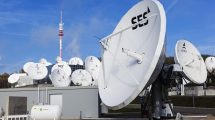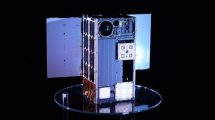
By Bogdan Gogulan, Managing Partner of NewSpace Capital.
Demand for artificial intelligence continues to grow. In fact, it’s booming. Indeed, it’s growing so fast that the big tech companies and their suppliers, which are already pouring billions of dollars into building data centres, are struggling to find suitable locations with sufficient power. According to the FT, they’re now exploring converting old power stations and industrial sites into data centres to power cloud computing and AI services. The fear is that constraints on the availability of electricity will hold back the expansion of AI.
Big Tech is not alone in putting AI front and centre. In certain countries and regions, AI is becoming a key focus. Thanks to the technology group G42, which is based in Abu Dhabi but has a global footprint, the UAE has become a world powerhouse for AI. G42 is a top researcher of artificial intelligence applications across government, healthcare, finance, oil and gas, aviation, and hospitality, describing its top core belief as ‘AI can supercharge the world.’ No wonder, then, that at the First International Artificial Intelligence Olympiad in Burgas, Bulgaria, students from the UAE won a silver award.
AI is revolutionising just about every industry. And the smallsat industry is no exception. It is making itself felt at every stage, from conception all the way to the running of the satellite once it’s in orbit. The overall effect is profound, driving up efficiency, driving down costs and substantially increasing the range of applications. The knock-on effect for us here on Earth, from supranational governments down to the individual, is extraordinary. And that’s because, in a nutshell, both AI and space have the same essential thesis: bringing enhanced productivity and efficiency to the global economy.
But let me be specific. AI is already helping us to design and build small satellites. At NASA’s Jet Propulsion Lab in California, the team has trained a large-language model to create software that delivers three-dimensional printing. In plain English: they’re teaching a GPT to print spacecraft. Those satellites can then, thanks to AI, follow an optical trajectory once they’re launched. That involves the difficult business of calculating and adjusting the path it takes through space to achieve its objectives in the most efficient way possible – minimising fuel consumption and travel time, and ensuring the satellite reaches and maintains a precise orbit for its mission.
Once in orbit, AI is playing a growing role in space debris avoidance and averting collisions – a challenge that has no doubt been overstated, but exists nonetheless. It supports the detection of foreign objects in space – of ‘space situational awareness’ – and initiates the necessary evasive action independently, dramatically reducing our dependence on a centralised body of space traffic controllers who, like air traffic controllers, would otherwise have to communicate with the satellite and satellite operator to warn it of a possible impact.
And communication is arguably the most important thing here. It is very, very expensive to send data from satellites to other satellites or to the ground and back up again. If a satellite could process some or even all of the data it received, either through imaging, which is critical for Earth observation and its many and varied applications – methane tracking, wildfire monitoring, flood detection, and rapid disaster prediction and response – or from other satellites, the savings would be enormous. Indeed such a development, in which AI has a crucial part to play, would be genuinely transformative for the space ecosystem.
That is precisely why the work of the Belgium-based company Simera Sense is so exciting. The team there are developing on-board processing, a means of using AI and edge computing to pre-process the data cameras capture, quickening the rate at which it can be made intelligible and usable. We’re not there yet, but it’s entirely possible that this problem could be solved within a year, opening up a massive market that encompasses all those customers who need information right away: governments, defence contractors, and emergency services being three obvious ones. Of course, from the perspective of investors, that development is just as noteworthy. Those investors can now capitalise on new, data-driven applications that were previously out of reach.
All this is timely. Because smallsats are becoming more and more important. Bayanat and Yahsat – soon to be merged under the name Space42 – worked with the synthetic aperture radar (SAR) satellite powerhouse ICEYE to launch the UAE’s first SAR satellite this summer. Around the world, national and supranational governments are scrambling to develop their launch capacities or contract SpaceX to put more satellites (big as well as small) in space. More satellites mean more data, and more data means more information for AI-powered companies like Kayrros, the world leader in environmental intelligence.
In short, the smallsat industry is at a hinge moment in its evolution, and this is all down to the ingenuity of those working in the sector and the transformative power of AI. The ability to produce smallsats that are highly specified, standardised and customisable, coupled with advances in satellite operations, including avoidance, and on-board data analysis, is opening up broad new avenues for growth and for investment. As the market expands, investors with the knowledge and adaptability to navigate this changing landscape and make informed, strategic and timely decisions will be in the best position to reap the rewards. Already, satellites were changing the world. Now, combined with another world-changing technology, what they could achieve here on Earth could be extraordinary.
So the future of the smallsat industry is bright – and those who recognise that and invest smartly will benefit.












Add Comment